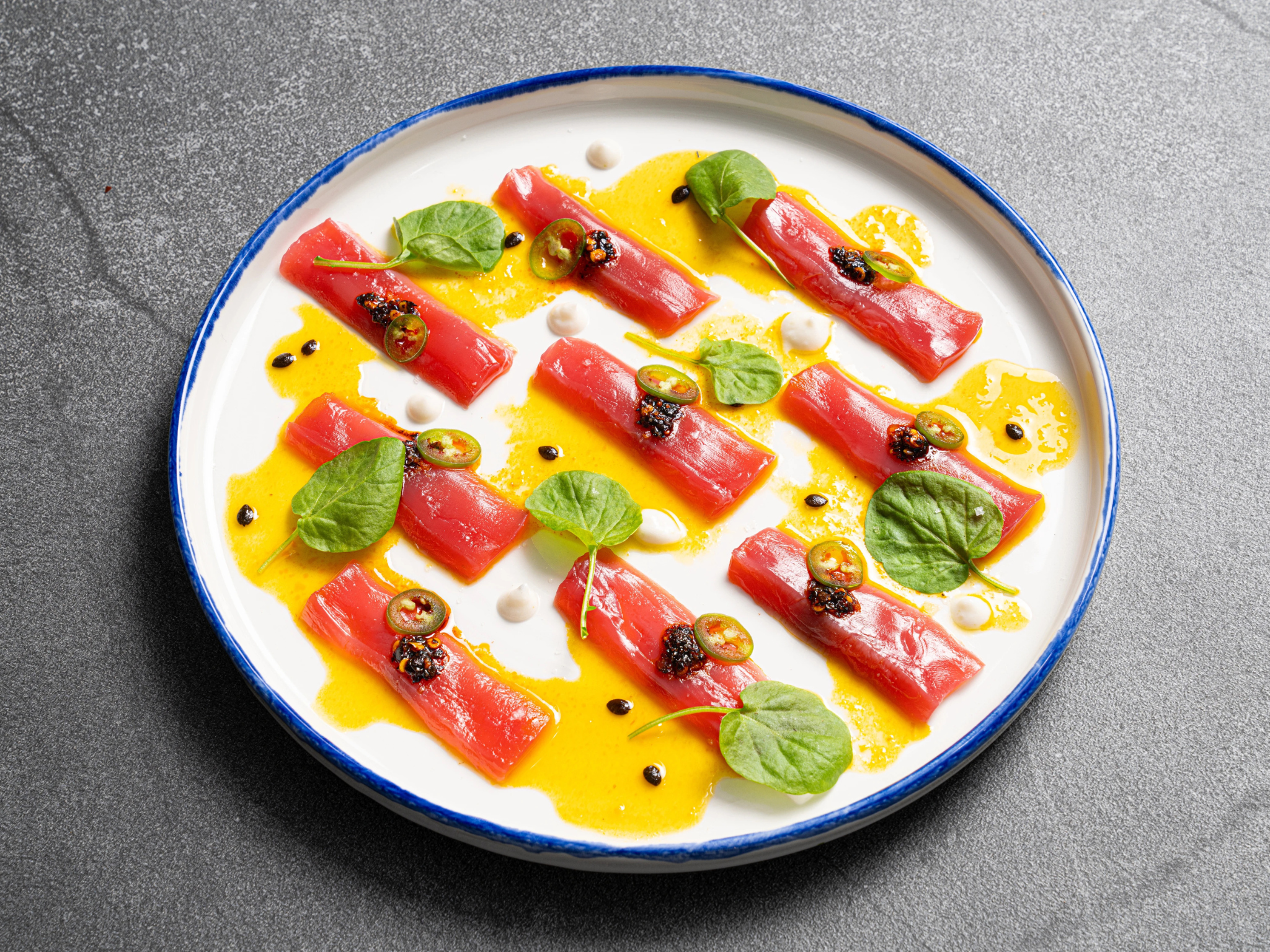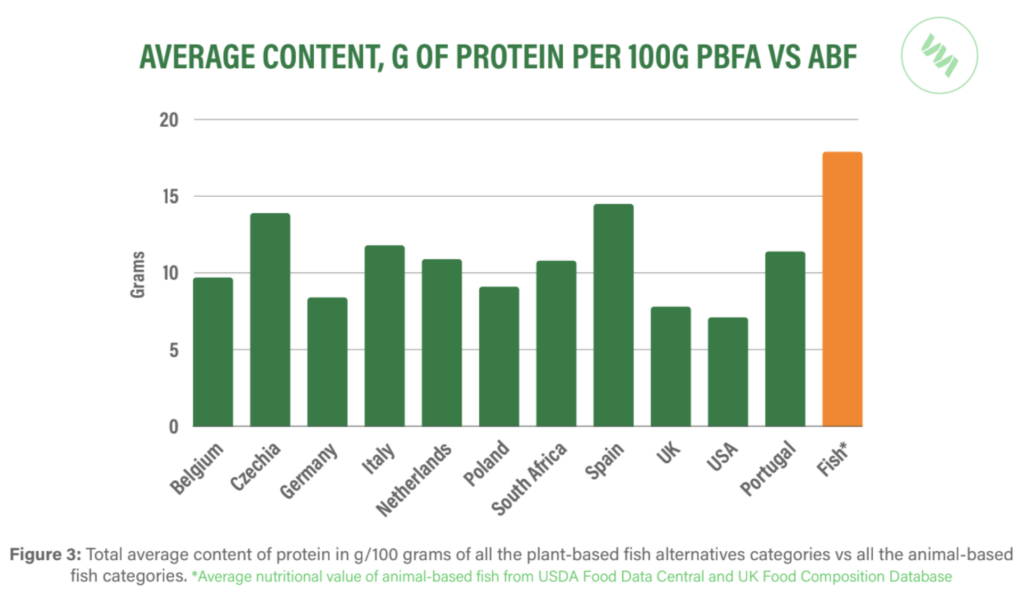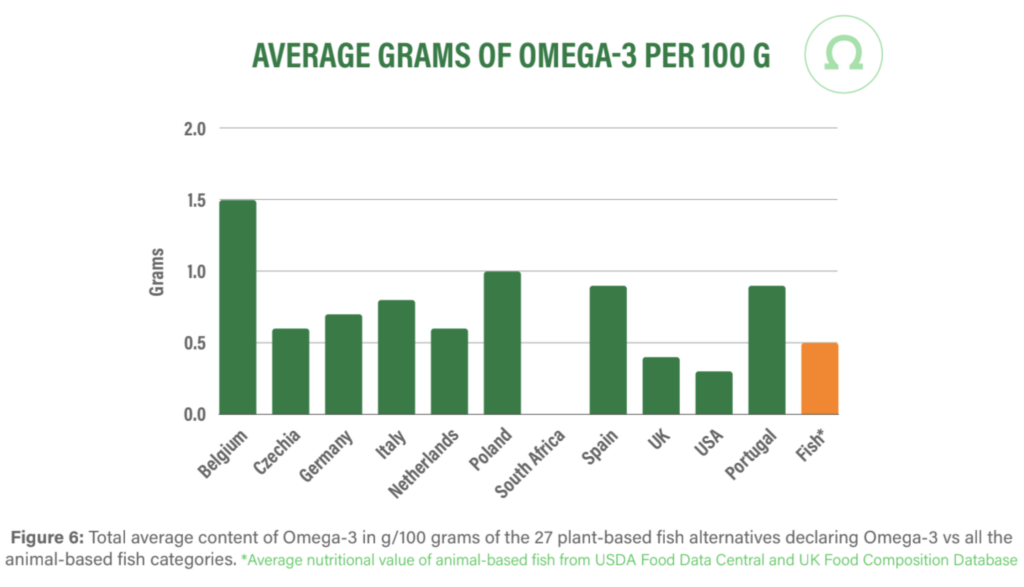
While most vegan seafood products qualify as a source of protein, on average, they still lag behind conventional fish, according to a new review.
While many flexitarians turn to seafood in their bid to cut back on meat, the adoption of plant-based fish products remains low.
In the US, vegan alternatives make up just 1% of the overall seafood market. They account for a similar share in the wider plant-based sector too. In Germany, Europe’s largest market for vegan food, sales of alternative seafood fell by 24% last year.
One major reason is nutrition: plant-based seafood is perceived as lacking in protein, omega-3 and several key micronutrients. However, seafood itself poses several health concerns, with ocean pollution raising the risk of antimicrobial resistance, mercury, and microplastics being present in these foods.
Meanwhile, 40% of global fish stocks are overfished, and half are harvested to their limit by trawlers to meet the demand for seafood. So these alternatives are a critical solution for climate mitigation and food security too.
To help address the health concerns around vegan seafood, food awareness organisation ProVeg International has released Out of the Net, a new report analysing the nutritional profile of 100 fish-free products against conventional fish.
Protein and omega-3 sources need diversification

ProVeg found that a typical cooked fish product contains 18-20g of protein per 100g whereas the average for plant-based alternatives stands at 10g, which is almost half. That said, this number varies greatly across companies and countries, with some products offering over 22g of protein.
In the EU, foods can only be labelled as a “source of protein” if at least 12% of energy comes from the macronutrient. Nearly 80% of vegan fish options meet this criterion despite the gap with conventional seafood. Nevertheless, the strong demand for protein means plant-based options need to boost their content to reach parity with their conventional counterparts.
In countries like Spain and Czechia, all alt-seafood products meet the protein standard, while in the UK, less than half do so. “Although many plant-based fish alternatives provide a solid amount of protein, there is still work to be done in some regions in order to make these products more nutritionally competitive with their animal-based counterparts,” the report states.
To help get there, manufacturers are diversifying the source of alternative proteins for seafood, from soy and wheat to pulses, seaweed, microalgae, and mycoprotein. “By leveraging optimal plant-protein blends and exploring diverse protein sources, plant-based fish alternatives can achieve a protein quality that is comparable to animal-based products,” notes ProVeg.

Conventional fish is already hailed for its low saturated fat and high omega-3 fatty acid content. The research suggests that plant-based alternatives have a similarly beneficial profile for saturated fat, with most products falling below the EU threshold of 1.5g.
However, only 27% of the vegan fish products in the study listed omega-3 content on their packaging, at an average of 0.75g per 100g (on par with seafood). These fats boost heart and brain health and reduce inflammation, and are especially important for vegans, who are more likely to be deficient.
And even among the minority of products with omega-3, the primary source is alpha-linolenic acid (ALA). “To better replicate the nutritional profile of seafood, plant-based alternatives should consider the inclusion of eicosapentaenoic acid (EPA) and docosahexaenoic acid (DHA)–for example, by using algae oil as a direct source,” the report recommends.
Vegan seafood lacks in micronutrient fortification

On average, plant-based seafood contains 1.2g of salt per 100g, above both EU and US thresholds – though it’s important to note that these products don’t need to be seasoned with more salt during cooking, unlike conventional versions.
Another issue? The availability of micronutrients. Fortification is a common strategy in the meat alternatives industry, but not as much for fish alternatives. When it comes to B12, only Spain has more than 50% of products fortified with it – the US, the UK, South Africa and Czechia were found completely lacking.
The same is true for iron in the latter three countries. However, every vegan seafood option in the US is fortified with this micronutrient.
“Government, policymakers, and food producers should collaborate to include fortification as a standard practice when it comes to the formulation of plant-based alternatives to fish, as well as plant-based dairy products,” the report states.
The one area where fish-free seafood shines is fibre, with conventional versions devoid of this nutrient (unless they’re breaded). Vegan alternatives contain 3.57g of fibre per 100g on average.
How the industry and government can improve plant-based seafood

To enhance the overall nutritional credentials of seafood analogues and increase their uptake by consumers, ProVeg laid out several recommendations across sectors.
It’s imperative for producers of vegan seafood products to ensure these foods offer similar protein content and omega-3 levels, while increasing micronutrient fortification. Further, flavour should be central to product development, with umami-rich ingredients like seaweed, soy sauce and mushrooms lending the broth-like savoury notes seafood lovers find appealing.
These efforts can be aided by scientists and researchers, who should focus on matching the nutrition levels of conventional seafood and advancing sensory research. They should further study the long-term health impact and nutrient bioavailability of plant-based seafood, while exploring processing techniques like high-moisture extrusion and 3D printing to improve texture.
Retailers should endeavour to improve the visibility and competitiveness of fish alternatives by placing them in high-footfall areas of the store and pricing them competitively with conventional options. Partnering with brands on in-store tastings and cooking demos can help too.
The report highlights the importance of consumer organisations to build food literacy by educating the public on processing, fortification, reading on-pack labels, and balanced eating.
Finally, governments have a key role to play. They must develop tailored nutritional guidelines for plant-based alternatives, ensure food fortification is a common practice, and include vegan seafood in national dietary guidelines. Policymakers can also run public awareness campaigns to address misconceptions about the category, and implement policies to make these products more accessible and affordable.
“This could include reducing or eliminating value-added tax on these products, providing subsidies to producers, and supporting the development of efficient supply chains,” states the report.
The post Plant-Based Seafood Needs A Protein & Omega-3 Boost, Finds Nutritional Review appeared first on Green Queen.
This post was originally published on Green Queen.